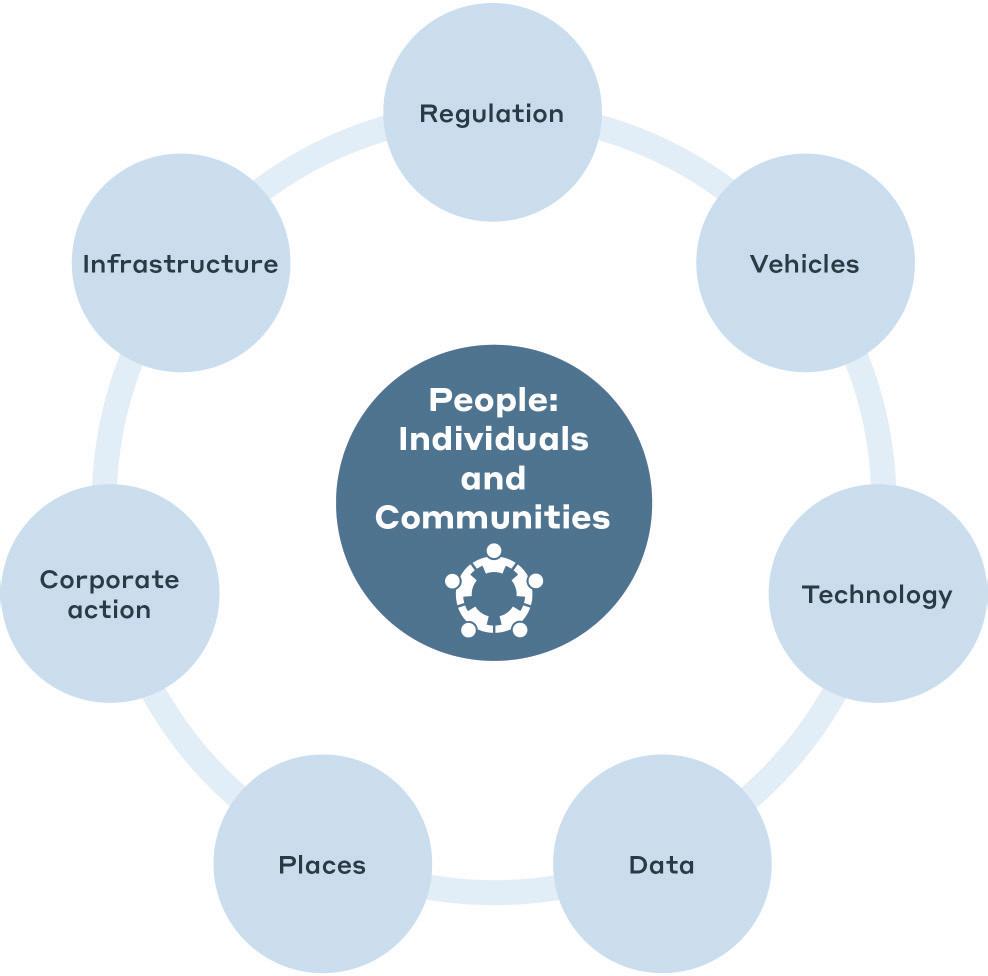
3 minute read
The Human Side of Climate Change
from Annual Review 2023
by ITS_UK_Org
The Intergovernmental Panel on Climate Change (IPCC)’s recent Synthesis Report makes sobering reading. Without immediate significant action, the climate impacts we are already seeing across the globe will only worsen; there is a rapidly closing window of opportunity to secure a liveable and sustainable future for all.
The Report makes a clear call for the world to achieve urgent, system-wide transformations. What does this mean for ITS and the Future of Transport? Our Net Zero ambitions are not new. We know that transport is the largest contributor to UK domestic carbon emissions; that transport emissions have been broadly flat for the last 30 years, even as other sectors’ emissions have declined; that while elements of the system – primarily cars – have reduced their emissions their numbers and size means this has failed to dent overall emissions. We need urgent, system wide transformations to rapidly reduce carbon emissions (mitigation) and build the transport system’s resilience to climate change (adaptation).
Advertisement
Here I look at these challenges from a person-centred perspective: why it is crucial we as ITS professionals put people at the core of our climate change mitigation and adaptation efforts.
TAKING A PEOPLE-CENTRED APPROACH

So why are people important to the climate challenge? Fundamentally, we are not going to make progress if we don’t bring people with us. Even if you believe that the UK can achieve net zero transport by 2050 through technology alone, technology involves people – wanting, buying, using and adapting to new technologies and changing their behaviours as a result. The reality is that major behaviour change and rapid technology development and roll-out are two sides of the same coin.
ITS, by putting people at the heart of the transport system, can accelerate climate mitigation and adaptation. We can achieve these direct goals alongside multiple co-benefits for transport users, such as improved air quality, health and places. Considering people at the heart of every aspect of our work – vehicles, technology, data, regulation, placemaking, corporate action, and infrastructure design and use – maximises the likelihood of
success,
pace and ambition.
WHAT DOES PUTTING PEOPLE AT THE HEART OF ITS CLIMATE ACTION MEAN?
There is no magic formula, but there are a wide range of experts who offer different perspectives, skills and experience to help make this happen. Some basic principles are to:
• Understand individuals and communities: Understanding individuals and communities – their motivations, values, aspirations and potential barriers to change – are necessary building blocks for action. Recognising and responding to diversity will enable everyone to play their part in the climate transition and have their transport needs met.
• Keep it local: What works in one place won’t necessarily work in another. Each community needs to be listened to, worked with, and be part of the solution. Collaboration, empowerment and engagement are the tools to bring communities on this journey. Consensus can be reached even on controversial aspects of climate action. Deep engagement, for example through Citizens Assemblies, can unlock new solutions and increate the legitimacy of difficult actions.
• Keep it fair: As set out by the IPCC, ‘transformational changes are more likely to succeed where there is trust, where everyone works together to prioritise risk reduction, and where benefits and burdens are shared equally’. UK climate research has shown a remarkable consistency in identifying equity and fairness as key themes from the public. We need to be careful that ITS climate solutions are equitable if we want public buy-in and support.
• Watch out for habits: Habits are sticky: people and organisations often fail to change, or quickly revert to old behaviours. Habitual behaviour needs consistent effort to be overcome. Readiness to change is also dependent on the circumstances of an individual or organisation at a particular point in time; identifying opportune moments to change can be the key to success.
• Beware silver bullets. Policies are unlikely to be successful if only one of the possible behavioural barriers is identified and addressed in isolation. As with all things ITS, the problem needs to be tackled as a system.
Behavioural Science To The Rescue
In terms of people, one size most certainly doesn’t fit all. We need to understand and design for the richness and breadth of all transport users, and the wide range of reasons they rely on the transport system. There are a number of behavioural models that can help understand and respond to the individual, societal and wider context and help address people’s capability, motivations and opportunities to change. Using learning from different sectors and of course deep community engagement, we can ensure people are a fundamental part of the planning, design, operation and maintenance of transport systems. By putting people at the heart of climate mitigation and adaptation solutions, ITS can go faster, with greater impact, and with more efficiency. It’s not easy – both carrots and sticks are needed – but people are at the core of future success.










